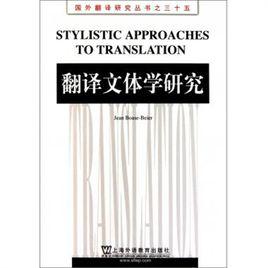內容簡介
作者隨之提出翻譯研究的認知轉向和文體學的認知觀,最後全面總結翻譯研究的文體學途徑,並介紹其在翻譯實踐中的作用。
作者簡介
博厄斯·貝耶爾,東英吉利大學高級講師,教授翻譯和文體學。在相關領域著作頗豐,除合作主編了《文學翻譯實踐》(The Practices of Literary Translation)外,還編撰了《看得見的詩人》(Visible Poets)等系列詩歌集。
圖書目錄
Acknowledgements
Introduction: Style in Translation
1. The Role of Style in Translation
1.1 Reading and writing style in translation
1.2 Before stylistics: the spirit of a text
1.3 Universals of style and creative transposition
1.4 Contextual, pragmatic and cognitive aspects of style and translation
1.5 Relativity and thinking for translation
1.6 Translating literary and non-literary texts
2. Theories of Reading and Relevance
2.1 Reading, style and the inferred author
2.2 Implication, relevance and minimax
2.3 Relevance theory and translating for relevance
3. The Translator's Choices
3. l Style and choice
3.2 Clues, games and decisions
3.3 Recreated choices in translation
4. Cognitive Stylistics and Translation
4.1 The cognitive turn in stylistics and translation studies
4.2 Translating the mind in the text
4.3 Ambiguity and textual gaps
4.4 Foregrounding, salience and visibility
4.5 Metaphor, mind and translation
4.6 Iconicity, mimesis and diagesis
4.7 Cognitive stylistics and the pretence of translation
5. A Stylistic Approach in Practice
5.1 Elements of a stylistic approach to translation
5.2 Using style to translate mind
5.3 Ambiguous translation
5.4 Attracting attention: patterns and other deviant structures
5.5 Metaphorical thought translated
5.6 Keeping the echo: translating for iconicity
6. Conclusion
Bibliography
Index

